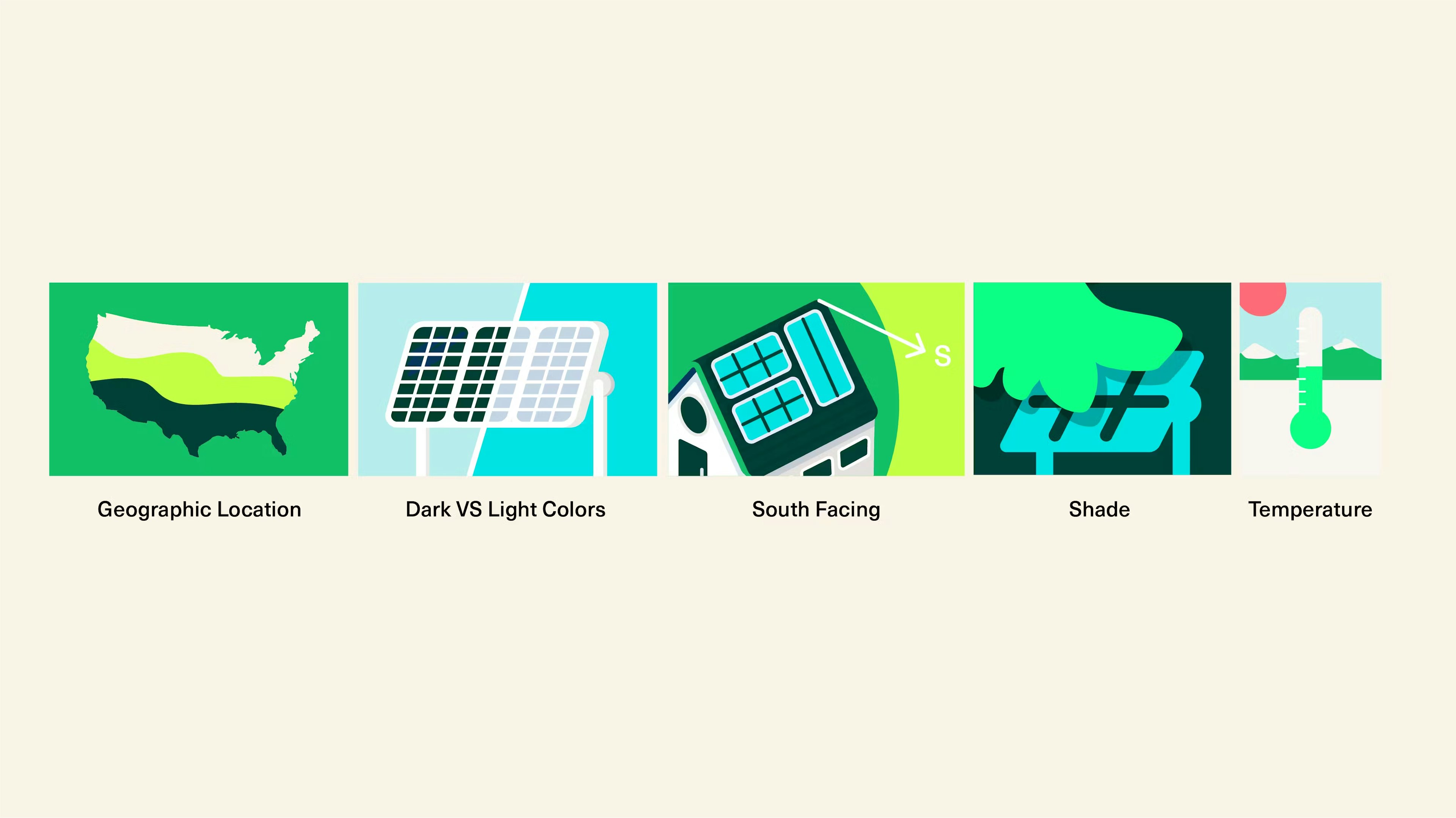How do solar panels work?

Every 90 minutes, enough sunlight hits the earth to meet all of the world’s energy needs for an entire year. In 1954, scientists made a crucial discovery that would help us harness all that energy. They discovered that silicon, when it’s exposed to sunlight, creates an electrical charge.
Thus, photovoltaic (PV) cells — and the solar power industry — were born.
What are solar panels?
Solar panels are collections of photovoltaic cells that capture the sun’s energy and turn it into electricity. The photovoltaic cells are connected in panels ranging from 32 to 144 cells to boost their power output. Most residential solar panels have either 62 or 70 PV cells.
Solar panels have a few basic components:
- The panels themselves, which capture the sun’s energy
- Inverters, which turn the electrical current from the panels into current that can be used in homes and businesses
- Racking and mounting systems that hold the panels in place, either on rooftops or on the ground

How do they turn sunlight into energy?
- The sun radiates electromagnetic energy, which we receive as sunlight. Photons, or light particles, strike the silicon surface on PV cells and get absorbed.
- The photons knock electrons in the PV cells free from atoms. The freed electrons move around, generating an electrical charge. Solar developers add impurities (e.g., boron and phosphorous atoms) to maximize the number of electrons that can be freed, which increases energy conduction. This is in the form of direct current (DC) energy.
- Inverters turn the DC into alternating current (AC) energy, which is what devices and appliances used in homes and businesses require. As AC power, the energy can be used, supplied to the power grid, or stored in a battery.
Grid-tie solar systems deliver energy into the power grid. Most PV systems are tied to the grid. Off-grid systems direct their energy to a rechargeable battery located past the inverter. The solar cells provide a direct charge to the battery, so excess energy can be drawn from the battery as long as it is available.
What affects solar panel efficiency?
The number of solar panels you need and how much electricity they generate will vary based on the panels’ efficiency. Efficiency measures how much of the sun’s energy the panel can convert into usable electricity. Average efficiencies typically range from 15-18%, but a few factors could change this.

Geography
If you live in a northern state like Massachusetts or New York, you’ll get less daily sunlight exposure than more southern states such as Arizona or New Mexico. Find out the average daily production from one kilowatt (kW) of peak-capacity solar panels for your state from this map.
Sun exposure
To function at their maximum efficiency, solar panels need direct access to sunlight. If even one of the PV cells is shaded, the panel will not produce as much power as if all the cells were in direct sunlight. Advanced PV systems will track the sun as it moves across the sky throughout the day, so the orientation of the panels will shift according to where the light is coming from.
For rooftop solar, southern-facing roofs offer the greatest window for productivity because they receive the longest sun exposure. If your roof faces a different direction or the southern-facing part of your roof is covered by trees or located in a shaded area, you can place your solar panels elsewhere. Just know that their efficiency will not be as high.
Temperature
It’s a common misconception that solar power doesn’t work as well in cold climates. That’s not true; efficiency is affected more by sun exposure than by climate. Even if there’s snow, good sun exposure will melt the snow quickly so the panels can keep functioning at a high efficiency.
Higher temperatures actually create the greater risk for efficiency. Depending on where solar panels are installed, their efficiency can decrease by 10-25% at temperatures above 77 degrees. Each type of panel has its own heat tolerance; manufacturers include this information on each panel. To maximize efficiency, solar installers have a few methods for keeping panels cool:
- Raise panels a few inches off the rooftop to allow air to circulate around them
- Choose solar arrays made of lighter-colored materials, which absorb less heat than darker materials
- Install inverters and combiners, which generate heat, at a distance from the solar panels so they don’t transfer heat

Sign up for solar savings
Sign upSimilar articles

Solar provides numerous benefits, both environmental and financial. But is it really as great as it seems? Let’s break down the pros and cons of solar power.

In a matter of years, solar power has gone from a relatively obscure form of energy to one of the fastest-growing power sources in the world.

Whether you’re searching for a clean energy alternative or looking for ways to reduce your electric bill, you’ve probably thought about installing solar panels on your property. But do solar panels really save you money? And if so, how much? Is the upfront cost worth it?